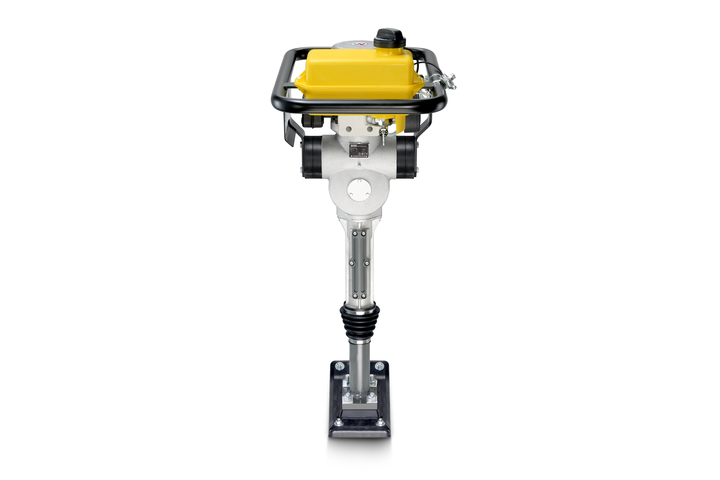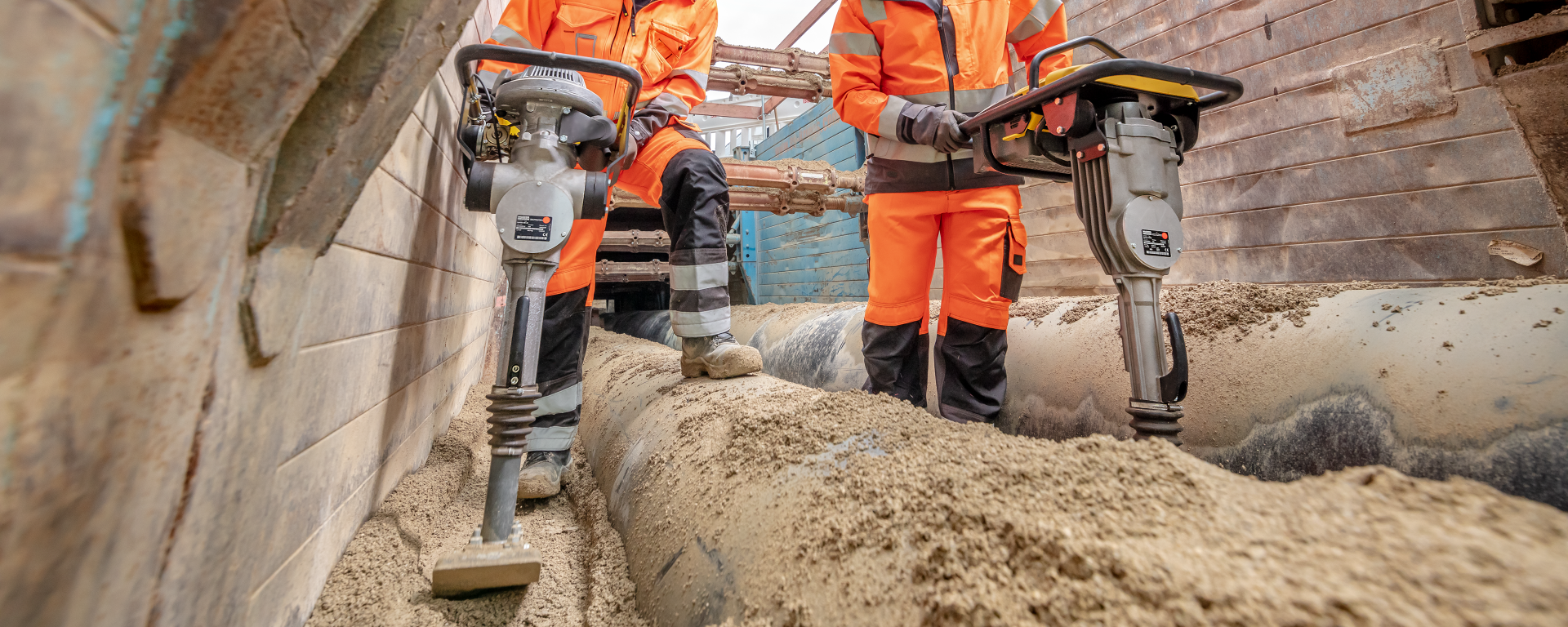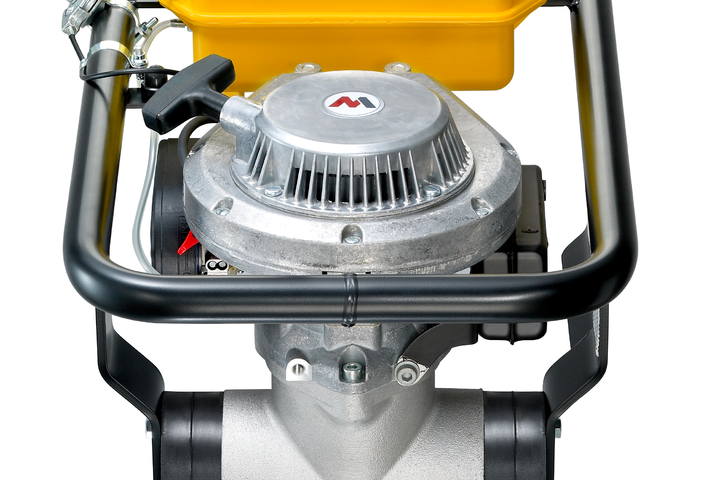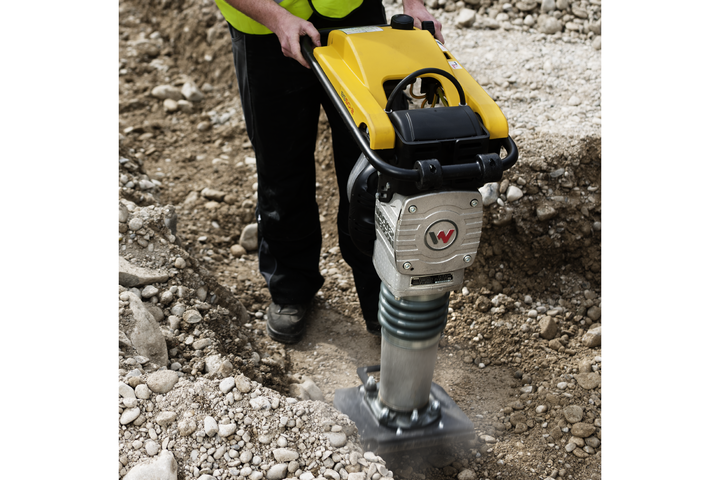
Slim, compact design with optimum machine center of gravity
- The compact design, with its low machine center of gravity, offers tip-safe running and facilitates maneuvering, particularly in narrow trenches.
BS30

The BS30 is the vibratory rammer specially designed for professional compaction around pipes in trenches. The lightweight, compact dimensions and ability to deliver full performance even when tilted make the BS30 2-stroke rammer the only choice for this kind of job. It is powered by the WM80 engine, developed by Wacker Neuson.





